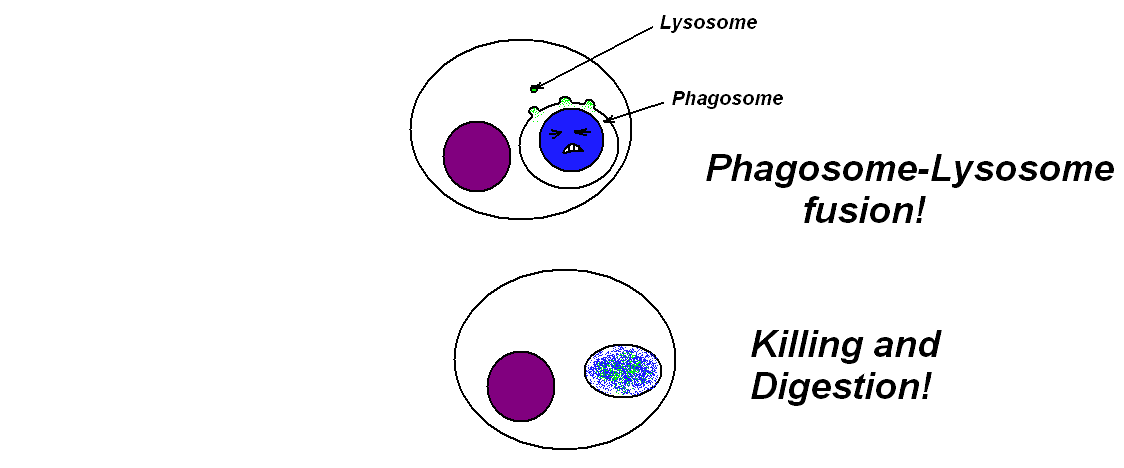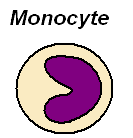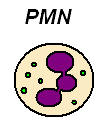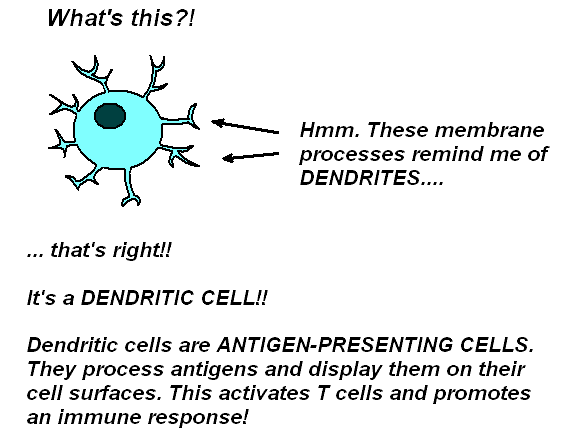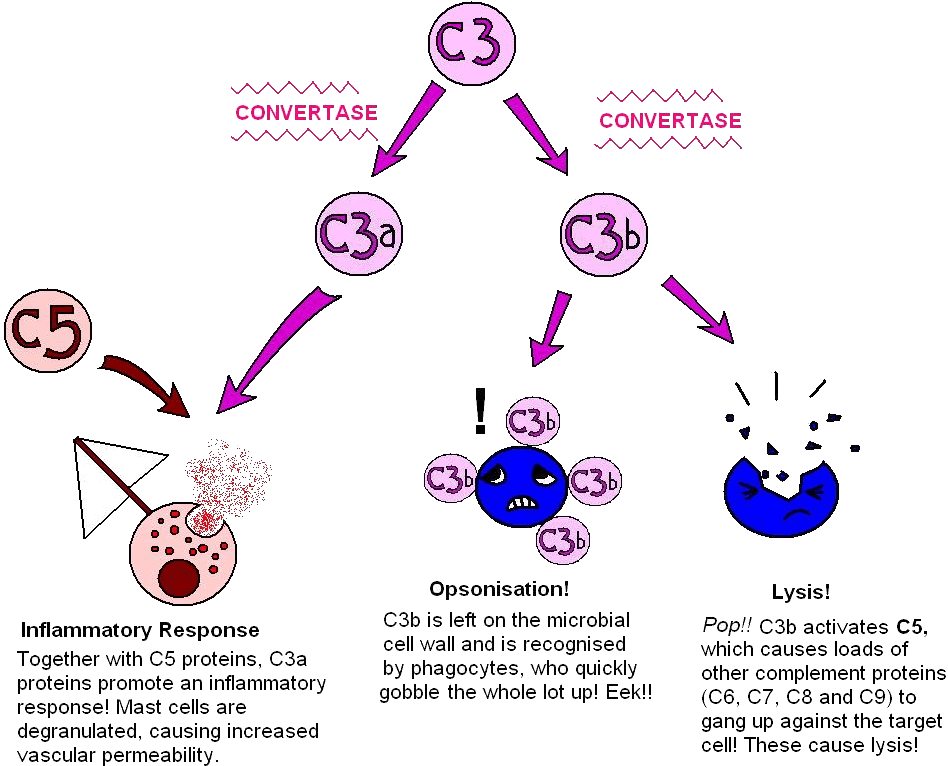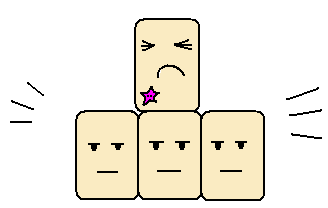The Innate Immune System
The innate immune system is our first line of defense agains invading micro-organisms. We've had our innate immune system since birth, and it's actually not changed very much since then! It responds rapidly to infection, which is a good thing, but it shows no memory whatsoever, nor any specificity. That's why we also need an adaptive immune system, which you can find out about by clicking this!
I'll describe to you some of the cells and molecules of the innate immune system....
Phagocytes
These cells destroy invading microorganisms by phagocytosis. They also destroy old cells and denatured proteins! Phagocytes are attracted to an organism, bind to it, engulf it by endocytosis and release cytotoxic materials to kill it. Digestive enzymes are then released onto the organism.
Phagocytosis

These cells are phagocytes...
|
MONOCYTES AND MACROPHAGES! These are made in the bone marrow and are mononuclear! What happens is, mature monocytes patrol the blood for about a day before settling in the tissues as macrophages. Macrophages may then live happily in the tissues for months or years! You'll find absolutely loads of macrophages in the liver as Kupffer Cells. |
"PMN" POLYMORPHONUCLEAR CELLS! So called because of their multilobed nucleus, they are more short-lived than macrophages. PMNs are scavengers patrolling the bloodstream in search of invading microorganisms.They are packed with granules containing nasty lysozyme, peroxidases, defensins, etc. |
|
.
There are ways and means of helping phagocytes to do their job. Ever heard of Opsonisation? It's when proteins called opsonins surround an invading microorganism, attracting phagocytes towards it. The word in Greek means "to make more tasty" (Lydyard et al., 2004) To give you a simple euphemism, if you were to try to tempt me with a boiled egg for breakfast it would need to be opsonised first with a bit of salt! And perhaps a nice bit of toast...
Opsonins can be the complement protein C3b, which you'll hear about later, or antibodies.
I bet you're wondering how things like helminths are phagocytosed? Well, they're NOT!!...
Other cells of the Innate Immune System include this one.....
The NATURAL KILLER CELL!!! (NK cell)
Natural killer cells are bigger than normal lymphocytes, they have more cytoplasm and dense granules! NK cells will kill any cell that has been infected with a virus! They will also destroy tumour cells...

.
(Actually, there are no guns involved!! The NK releases "perforin" molecules onto the target cell, which punches holes in its plasma membrane. The NK cell then releases cytotoxins which will induce apoptosis (programmed cell death) in the target cell. Nasty!! ) (Rabson et al 2005)
.
.
.
You're probably dying to hear about the molecules of the innate immune system! I won't keep you in suspense a moment longer.....
1. The Complement System

.
No, not Compliment!! COMPLEMENT!
This is a group of 20 or so plasma proteins, which act in a similar way to enzymes. The leader of the gang is called, quite simply,

.
The enzyme that is activated is called C3 CONVERTASE!! Makes some sort of sense!
When C3 convertase comes along, C3 is cleaved into two bits, C3a and C3b....
.
2. Acute-phase Proteins
We LOVE acute-phase proteins!! They have three important jobs:
1. Opsonisation!!
One of these proteins, "CRP" (C-reactive protein), likes to bind to microbes. When it does so, the complement system is activated, and we know what that does! C3b is deposited onto the microbe, causing opsonisation! Sometimes acute-phase proteins can optimise microbes directly, leading to phagocytosis.
.
2. Limiting tissue damage!
Microbial infections can be pretty nasty, and often results in damage to tissues. We certainly don't want this! Another important role played by acute-phase proteins is to limit this damage. So how do they do it?? Well, there are protease inhibitors among the acute-phase proteins, which can neutralise lysosomal enzymes released by macrophages! Phew!
.
3. Tissue repair!
You may have heard of fibrinogen, an important clotting factor. This is, in fact, an acute-phase protein! It is always present in the body at low levels, but following an infection it rapidly increases!
3. Interferons
You'll love these, they're great! Imagine that you're a cell who'd just been infected with a virus. One worry would be that this virus would be able to replicate itself further and infect other cells! It's too late for you, of course, but you could be community-spirited and prevent the cells around you from replicating the virus. So here's what you do....
You synthesise and secrete interferons into the extracellular fluid around you. They are proteins which literally interfere with neighbouring cells, causing them to reduce their rate of mRNA translation! This renders them incapable of replicating the virus, even if they wanted to! The virus is then surrounded by a barrier of cells incapable of replicating! Very useful indeed.
Interferons are part of a larger group of molecules called cytokines! As their name suggests, they are responsible for changing the movement of other cells. Cytokines are not exclusive to the innate immune system - they are also used by some cells of the adaptive immune system!
